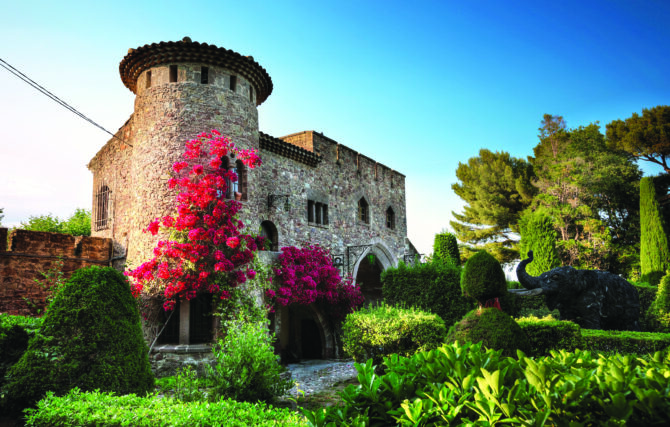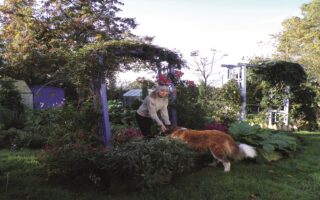Beautiful Bougainvillea at Château de la Napoule

Château de la Napoule in the south of France inspires with its beautiful bougainvillea. Sue Bradley advises on this colourful heat-loving plant
The Chateau de la Napoule is the remarkable legacy of an artistic American couple who lived on the French Riviera during the early 20th century. The picturesque building overlooking the Bay of Cannes dates back to medieval times but was a ruin when sculptor and painter Henry Clews Junior and his wife Marie acquired it.
The couple devoted almost 20 years to rebuilding the château and creating a beautiful garden that provided the perfect backdrop for Henry’s fantastical sculptures of animals, people and mythical creatures.
During the Clews’ tenure, the château was surrounded with flower beds and borders packed with the whites and greens of flowers and foliage and populated by marabou storks and peacocks. Nowadays, however, a bit more colour has crept in, nowhere more so than around one of the building’s turrets with its stunning display of bougainvillea.
This climbing evergreen shrub originates from Brazil but is named after the 18th-century French admiral and explorer Comte de Bougainville, a contemporary of James Cook. He took part in the Seven Years’ War in North America and the American Revolutionary War, and was famous for circumnavigating the globe in a scientific expedition in 1793.
The plant named in his honour is well known for its vibrant paper-like ‘blooms’, which come in a variety of colours – pink, yellow, white, red and mauve. They’re actually modified leaves, or bracts, which surround clusters of tiny white flowers.
Bougainvillea is a sun- loving species that’s now a common sight on fences, pergolas and the walls of buildings in countries that enjoy a Mediterranean climate, which means it’s right at home in the south of France. Unfortunately, for those in the north, it doesn’t tolerate frost. This means gardeners in cooler climates have to be content with growing it in conservatories or glasshouse in the winter months, during which time they can enjoy months of colour, before moving it outside to a sunny and sheltered spot over the summer, if desired.
Gardens in the south of France
Whether grown inside or out, many bougainvilleas can reach two metres in height, so it’s important to give them good light and plenty of space, both in terms of the area they’ll eventually cover, as well as the piece of ground or pot in which they’re grown.
They respond well to regular pruning, which keeps them under control and promotes new growth, leading to more blooms. They also need careful watering depending on the time of year, making sure they’re not too dry for a long time. Feed with a nitrogen- rich fertiliser in spring to encourage plenty of foliage, and move to something that’s higher in potash once the bracts start developing for plenty of colour. Remove faded blooms for fresh displays.
While bougainvillea can cope with temperatures as low as 2°C, plants growing in areas that dip below 10°C may lose some or all of their leaves for a time.
Looking for more like this?
French Property News magazine not only delivers in-depth regional buying guides, sound and trusted advice from leading experts and inspirational real life stories, but also practical information and tips on living in France.
Lead photo credit : Napoule - Vito Vigali
Share to: Facebook Twitter LinkedIn Email
More in gardening, Provence-Alpes-Cote d'Azur



